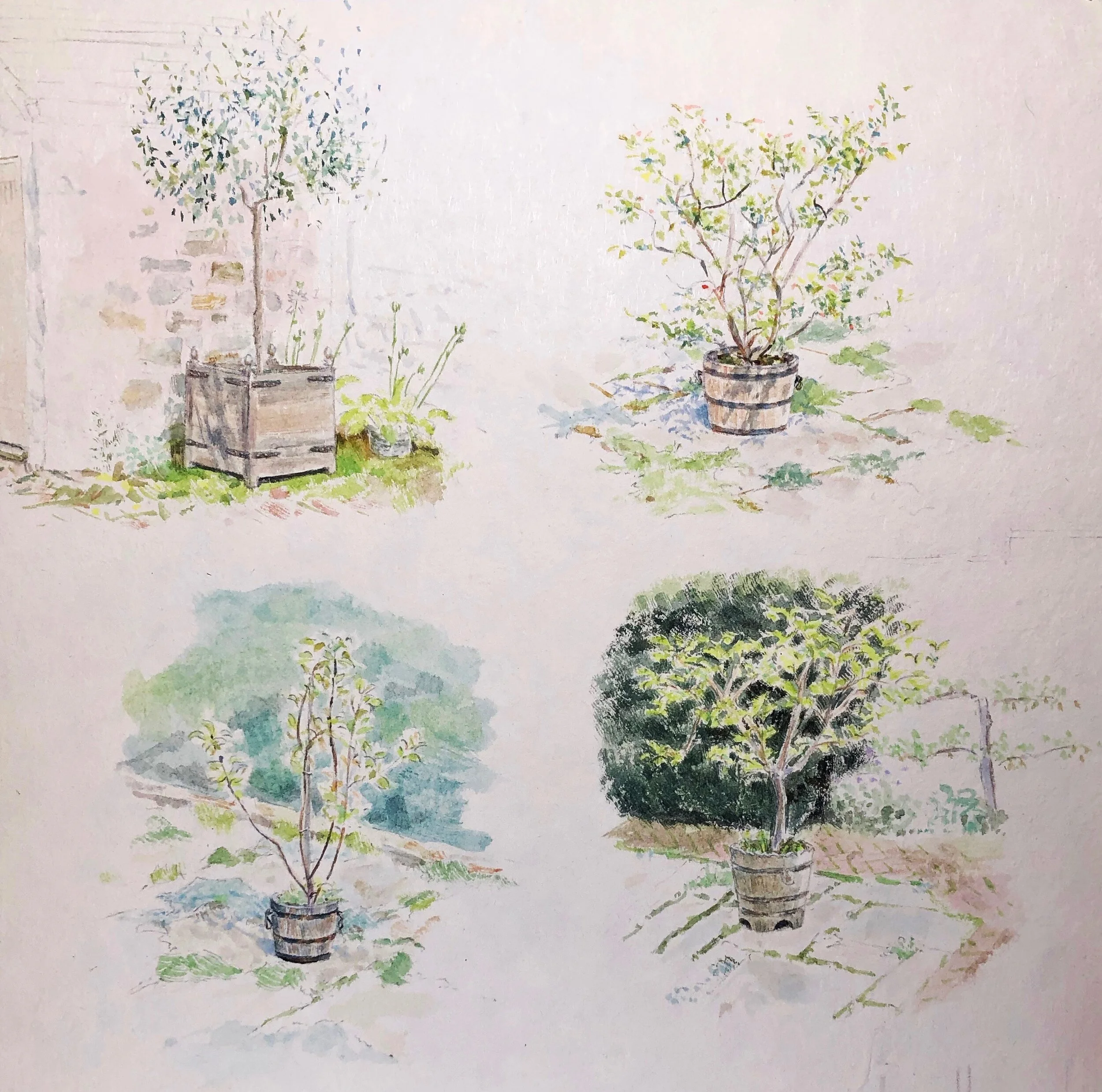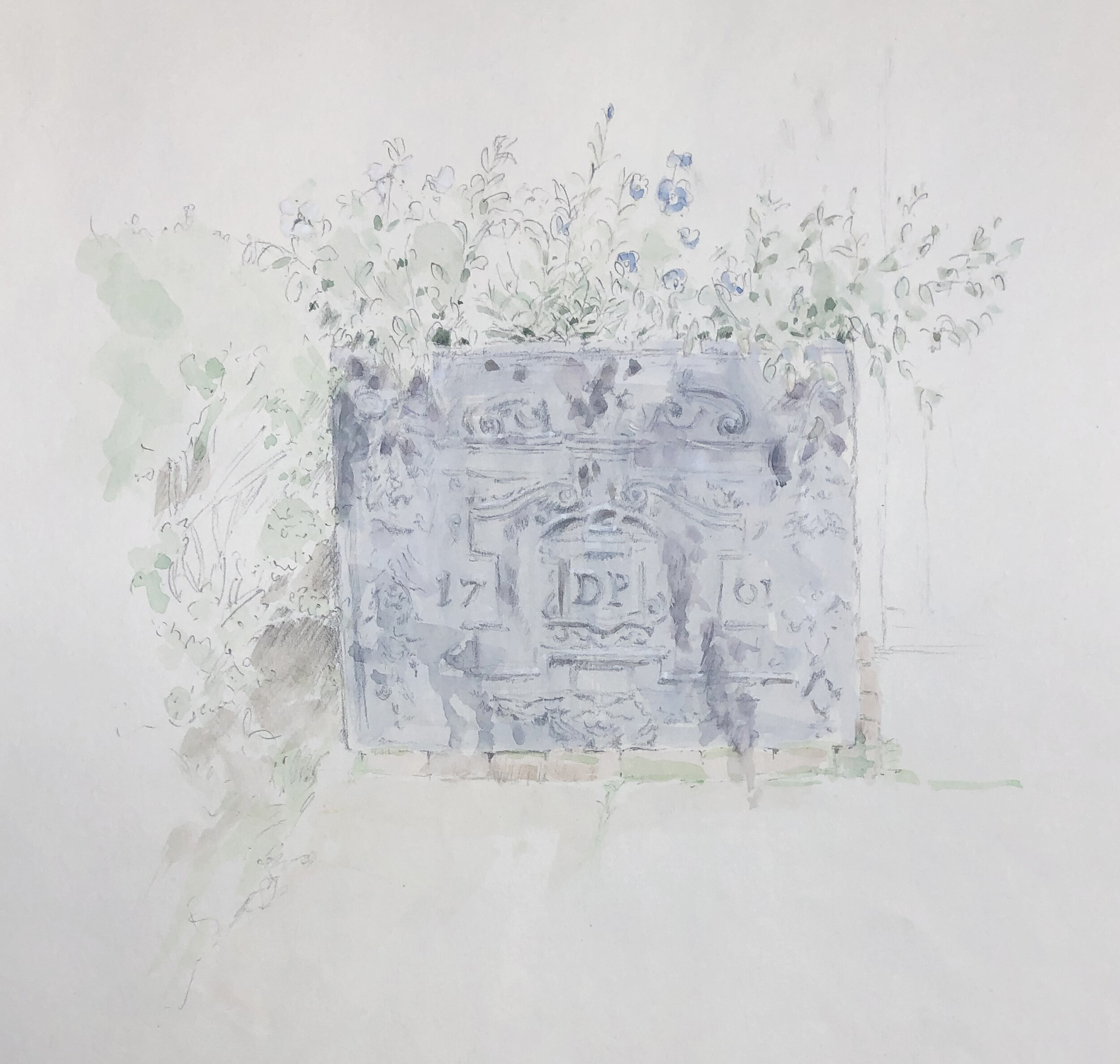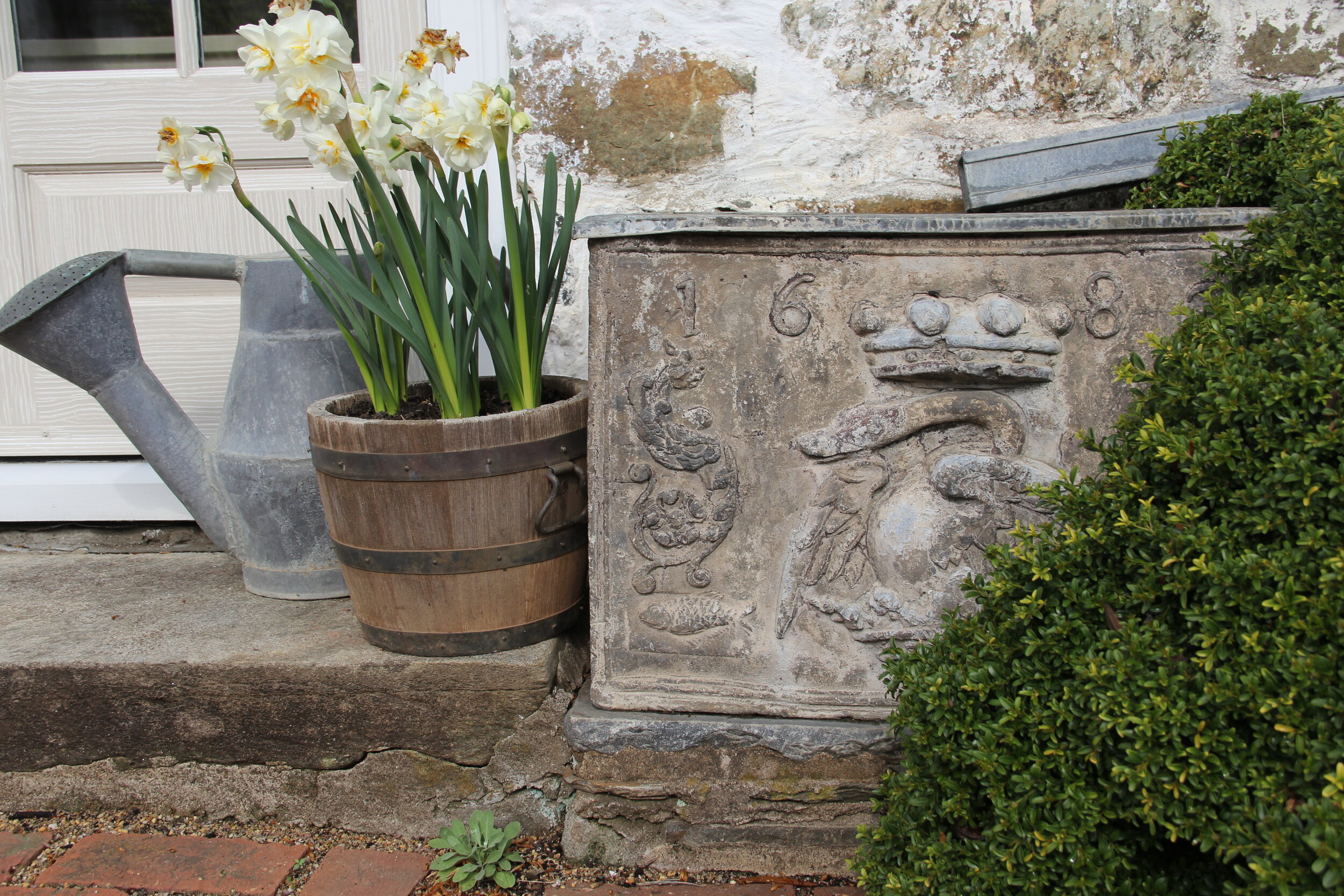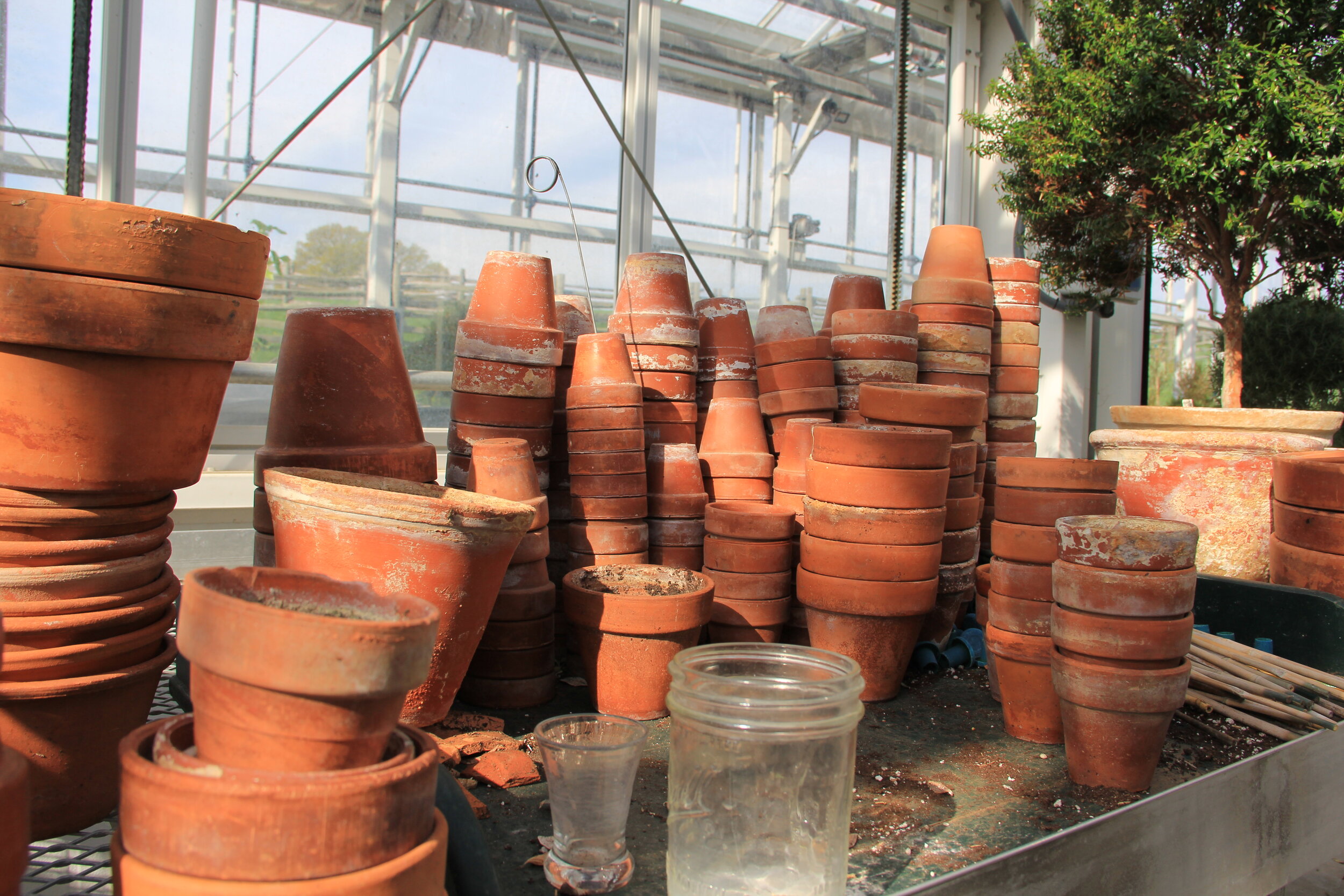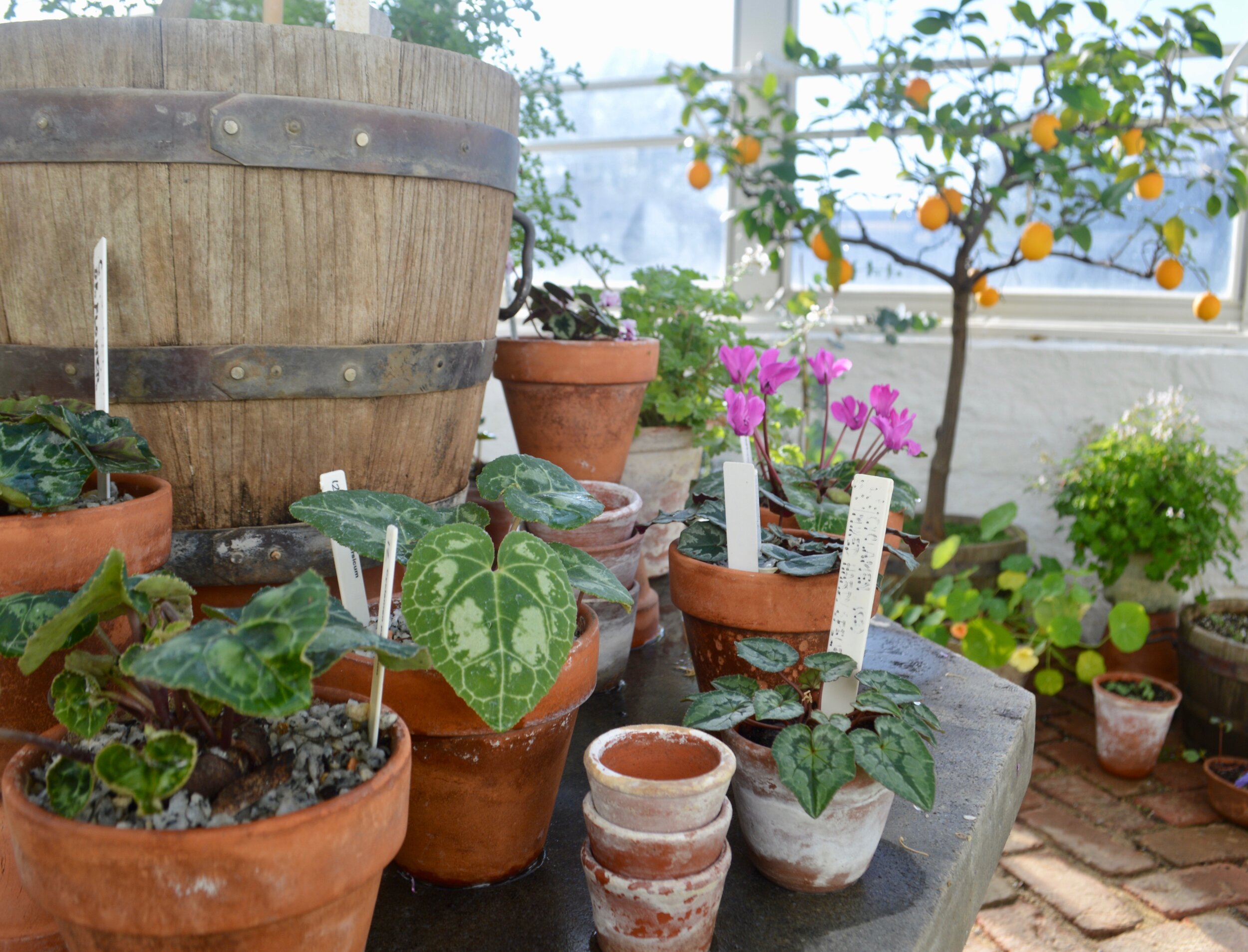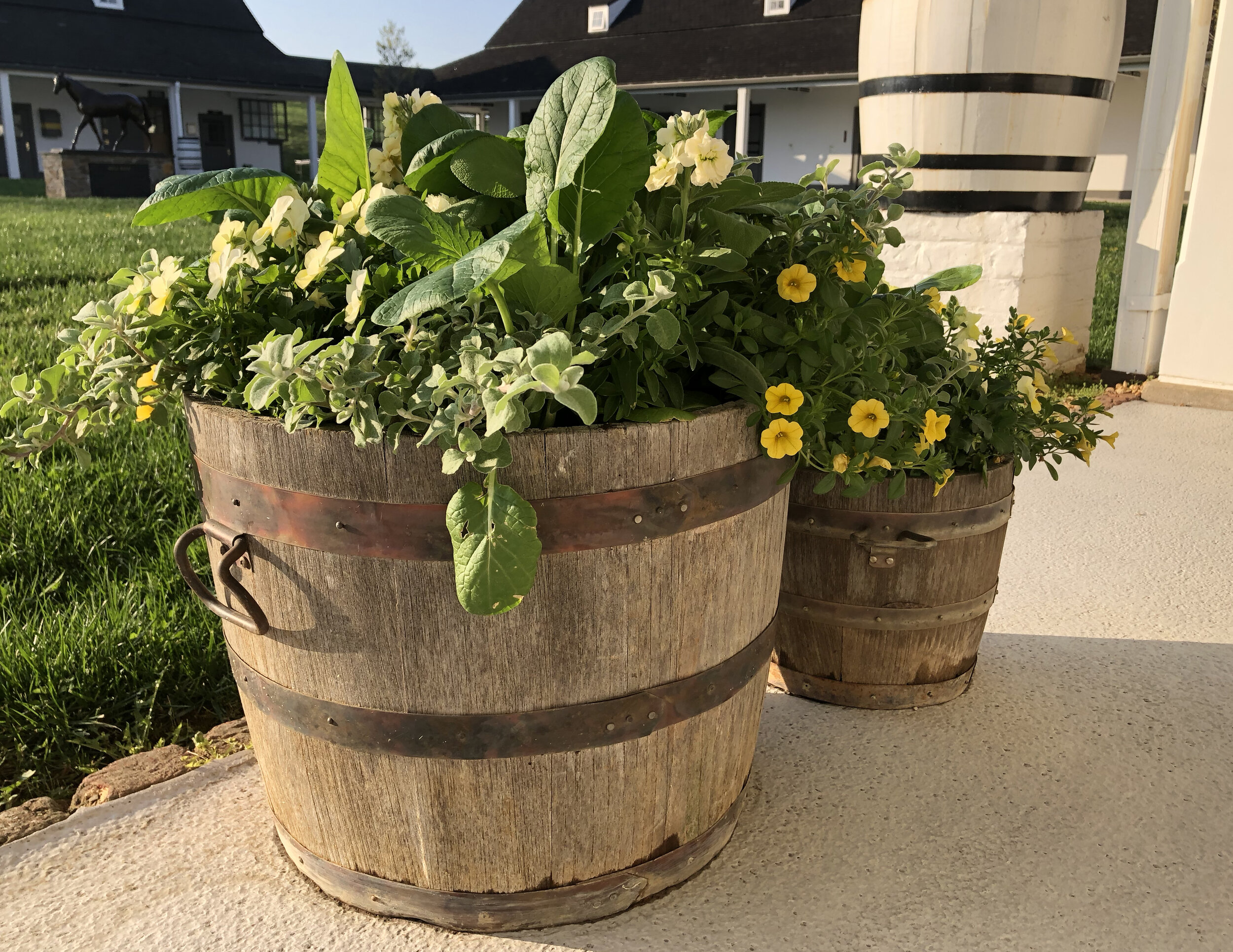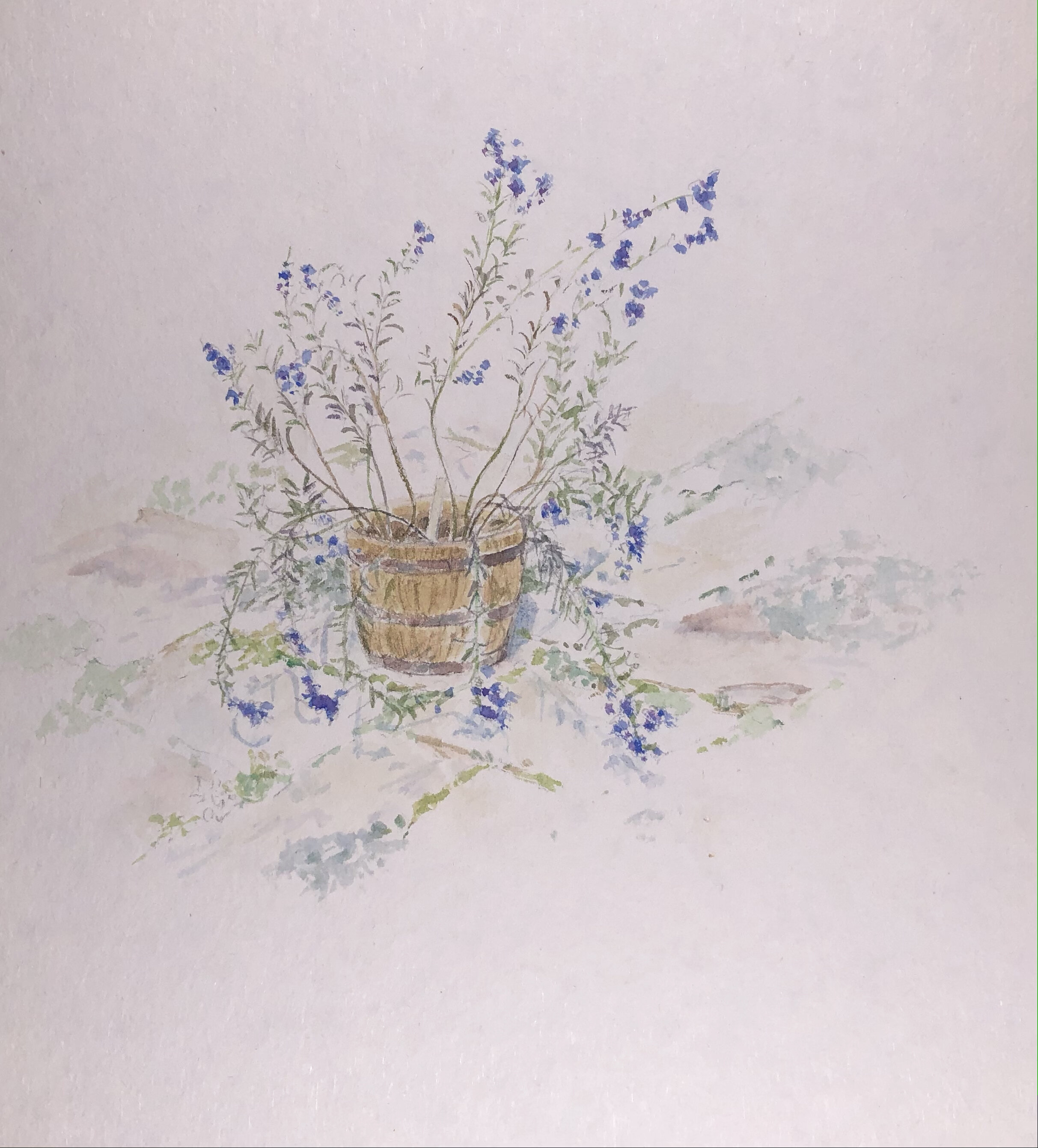Oak Spring Planters
Emily Ellis
It goes without saying that plants are the stars of the garden, but the right receptacle can enhance their beauty, helping to seamlessly blend outdoors with in. OSGF founder Bunny Mellon’s unerring eye for all things beautiful included the pots and other containers she used to grow and display her plants; the site wouldn’t feel like Oak Spring without a teak barrel planter or mineral-streaked terracotta pot sitting on a doorstep or windowsill.
While many of Mrs. Mellon’s planters were bought or gifted to her, others were made on site by the craftsmen employed at Oak Spring, serving as reminders of the generations of expert carpenters and metalsmiths who have worked on the site. To celebrate National Garden Month, we’re sharing the stories behind several of Oak Spring’s planters.
Warwick Castle Planters
A late summer display in one of the lead cisterns in the formal garden.
The formal garden is scattered with interesting furniture and statues, but visitors’ eyes tend to be drawn in particular to the two large, ornate lead cisterns sitting against the white-washed walls of the guest house and the main residence.
The same cistern illustrated by artist Alison “Snowy” Campbell in the 1970s. Please do not reproduce without permission.
The second, smaller lead cistern is tucked behind a boxwood by the main residence.
The baroque-style planters, dated 1701 and 1680, have an interesting origin story. They were a gift to Mrs. Mellon from Charles Guy Greville, 7th Earl of Warwick (1911-1984), and were likely from Warwick Castle, which was originally built by William the Conquerer in 1068.
The Earl had good reason to be thankful for the Mellon family. During World War II, many English children were evacuated from the country under Operation Pied Piper - among them his young son David, who became a ward of Mrs. Mellon while she was living at Carter Hall in Millwood, VA. Mrs. Mellon was married to Stacy Lloyd at the time, who worked in England during the war and was acquainted with the Earl and his ex- wife, Rose Bingham.
Mrs. Mellon and David (the 8th Earl of Warwick) would remain close even after he returned to England. Sadly, David passed away at the age of 61 in 1996, primarily known for having sold Warwick Castle to Madame Tussaud’s, the operators of the famous London Wax Museum. The beautiful cisterns are both a reminder of his relationship with Mrs. Mellon, and gorgeous planters for overflowing displays of seasonal blooms.
Terracotta Pots
Terracotta pots ready for seedlings and topiaries in Oak Spring’s production greenhouse.
Could there be a more perfect planter than a simple terracotta pot? Mrs. Mellon was certainly fond of them: Head Gardener Todd Lloyd, who has worked at Oak Spring for more than 30 years, estimates that the Oak Spring and Rokeby properties hold thousands of terracotta pots of various sizes and origins. Many of them are streaked with white mineral build up; Mrs. Mellon liked the aged appearance the pots would take on after months of water exposure, and would often ask her staff not to clean them.
Terracotta pots used in a display in the formal greenhouse.
Obtaining enough quality terracotta pots to fill Mrs. Mellon’s vast gardens and greenhouses, however, was no easy task. Oak Spring’s garden receipts and records reveal no small degree of frustration when it came to pot-purchasing. Order letters placed by gardening staff in earlier decades complain of breakage in pottery deliveries from abroad. In one letter from 1969, a representative from Richard Sankey & Son Limited, a pottery company in England that Mrs. Mellon had been referred to after another English company had been unable to fill her order, wrote apologetically that his company was also unable to deliver a large supply of clay pots to Virginia, “due to the large amount of packing and special transportation involved and with which we just have not got the staff to cope.”
Many other terracotta pots at Oak Spring were purchased from Ben Owen Pottery, a family business with generations of skilled potters that was located a bit closer to home in Seagrove, North Carolina.
Jean Schlumberger (French, 1907-1987) Flower Pot (Pot de fleurs), 1960, amethyst, emeralds, diamonds, black garnet ore, terracotta, 18, 20 and 22 carat gold, 7¼”H x 4”w x 4”D, 18.4 cm x 10.2 cm x 10.2 cm. Virginia Museum of Fine Arts, Richmond. Collection of Mrs. Paul Mellon. Photo: Katherine Wetzel © Virginia Museum of Fine Arts
Mrs. Mellon’s terracotta pots were displayed in her gardens, homes, and greenhouses, and were often given away as gifts. One was even worked into a jewelry piece commissioned from designer Jean Schlumberger: a detachable sunflower brooch, the center a rare 94-carat Kashmir sapphire called “The Dancing Girl of India,” is planted in an actual terracotta seedling pot from one of her Oak Spring greenhouses - proving that a simple terra cotta pot can elegantly bear all manner of precious cargo.
Versaille-Style Planters
Mrs. Mellon was an admirer of French garden design, famously having helped to renovate the Potager du Roi (Louis XIV's kitchen garden) at Versailles when her friend Hubert de Givenchy, a fashion designer and then president of the World Monuments Fund in France, asked for her assistance. Among the many Versailles-inspired touches found around Oak Spring are these distinctive wooden tree planters, resembling those found in Versailles’ Orangerie and around other locations at the famous garden.
Todd remembers these planters sitting on the front terrace of the Brick House (located on a part of the property that was sold after Mrs. Mellon’s death) and holding small bay trees, which allowed the cooks to easily pop out of the kitchen and pluck a leaf or two. While they are currently empty, the planters add to the beauty of the Oak Spring Garden Library’s exterior, gathering beautiful patterns of lichens as they age.
Teak Barrel Planters
Spring flower arrangements growing in barrel planters outside the Broodmare Barn.
A barrel planter illustrated by artist Alison “Snowy” Campbell in the 1970s. Please do not reproduce without permission.
All around Oak Spring, you will spot silvery teak wood barrel planters holding everything from the largest citrus trees to cheerful clusters of pansies. Teak lumber, which comes from a tropical hardwood tree native to Asia, has a high oil content and holds up well to onslaughts from the elements, making it an ideal wood for planters. The many teak containers at Oak Spring were handmade on the site: staff members including former Oak Spring carpenters Claude Robinson and his son, Claude Jr. made the barrels, and the aged stainless steel bands and handles were crafted by metal workers Bing Lloyd and Mike Lloyd, the latter who still works at the Oak Spring Garden Foundation. The carpenters replaced the bottoms of the planters every ten years or so in order to keep them ready for the next round of plants.
The decades-old barrels are still in excellent shape and are in heavy use across the property - a testament to the expertise that went into crafting them.
Oak Refuse Baskets
The top basket, made of oak, was used to carry garden debris.
Can you imagine dragging around your manure or weeds in a hand-woven oak basket? Mrs. Mellon, who approached every aspect of gardening in high style, used to have her gardeners dispose of refuse in several large, beautiful oak baskets that were used specifically for tasks like weeding and dead-heading. Todd remembers picking them up regularly from a maker in Maryland, before it was decided to switch to the less cumbersome and more durable plastic variety.
The sturdy baskets are still used by our gardening team today, although not for debris: they are great for displaying hefty potted plants, and are often brought out on special occasions such as Historic Garden Week.
Thanks to the gardening team for their help with this blogpost!
Banner image by Alison "Snowy” Campbell, who was commissioned to illustrate Mrs. Mellon’s interiors and gardens in the 1970s. Please do not reproduce without permission.
Additional source: Gordon, Meryl. Bunny Mellon: The Life of an American Style Legend. Grand Central Publishing, 2017
